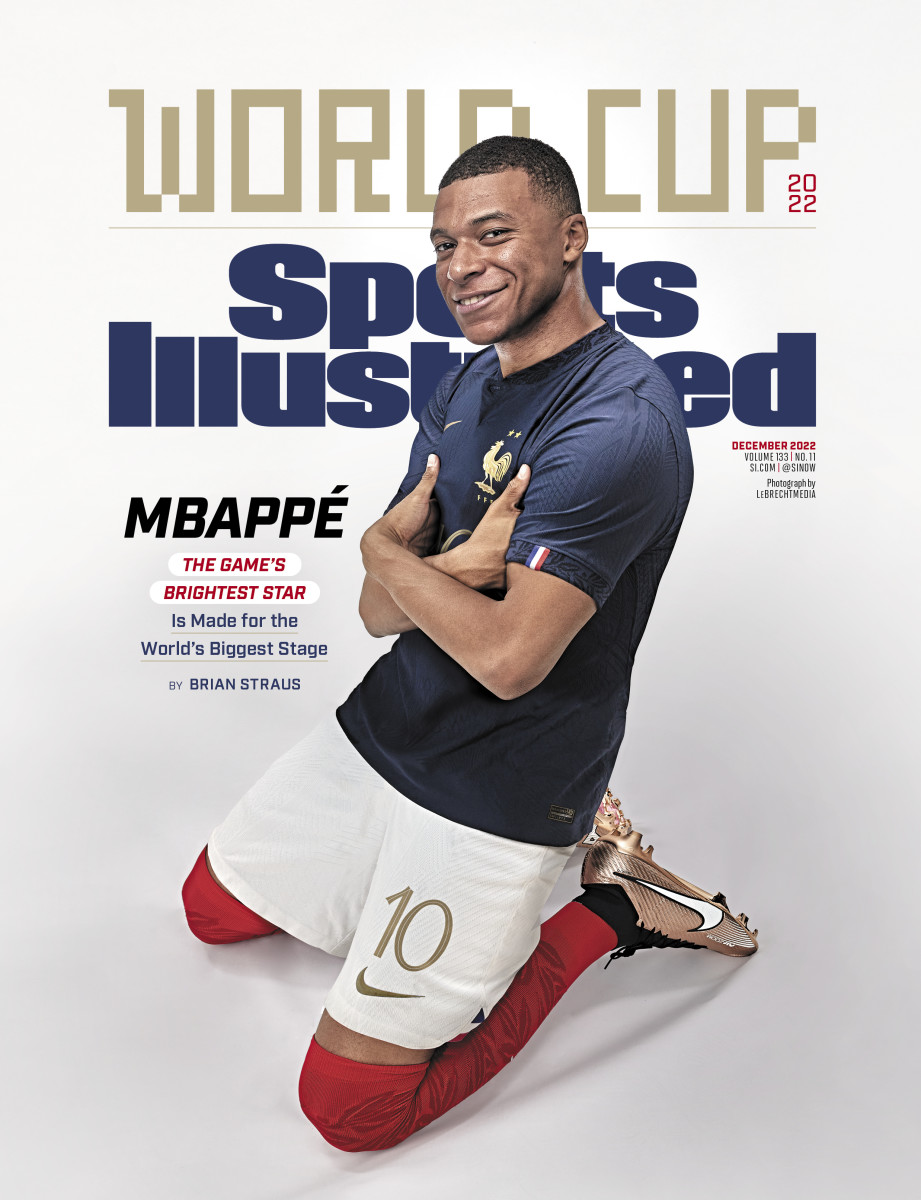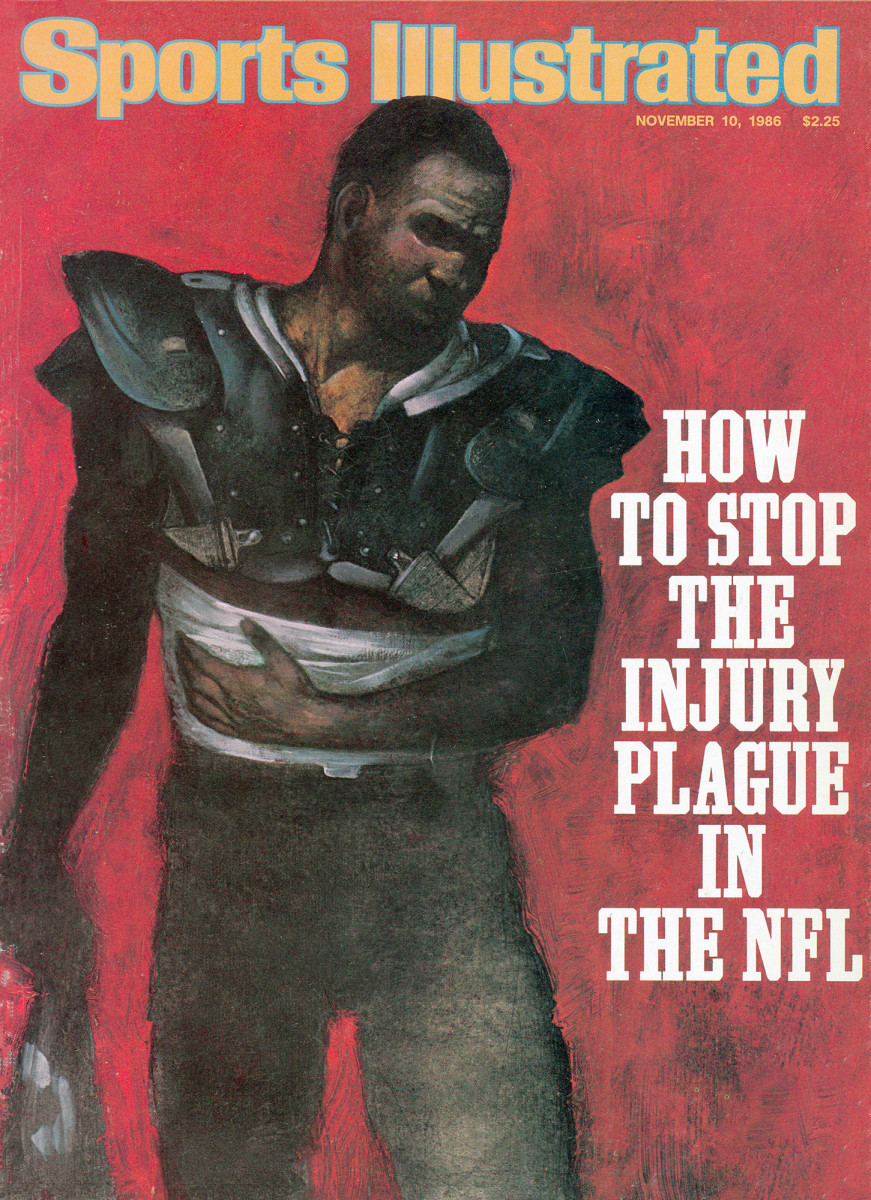SI:AM | The USMNT World Cup Roster Surprises
Good morning, I’m Dan Gartland. I’m very much ready for the World Cup to finally start.
In today’s SI:AM:
🇺🇸 Analyzing the USMNT World Cup roster
If you're reading this on SI.com, you can sign up to get this free newsletter in your inbox each weekday at SI.com/newsletters.
Who’s in, who’s out
U.S. men’s national team manager Gregg Berhalter has named his 26-man roster for the upcoming World Cup in Qatar and while all the biggest names are there—Christian Pulisic, Weston McKennie, Gio Reyna, etc.—there are a few surprises, both in terms of who will and won’t be coming to the Middle East.
First things first, here’s the roster:
Goalkeepers: Ethan Horvath (Luton Town), Sean Johnson (New York City FC), Matt Turner (Arsenal)
Defenders: Cameron Carter-Vickers (Celtic), Sergiño Dest (AC Milan), Aaron Long (New York Red Bulls), Shaq Moore (Nashville SC), Tim Ream (Fulham), Antonee Robinson (Fulham), Joe Scally (Borussia Mönchengladbach), DeAndre Yedlin (Inter Miami), Walker Zimmerman (Nashville SC)
Midfielders: Brenden Aaronson (Leeds United), Kellyn Acosta (Los Angeles FC), Tyler Adams (Leeds United), Luca de la Torre (Celta Vigo), Weston McKennie (Juventus), Yunus Musah (Valencia), Cristian Roldan (Seattle Sounders)
Forwards: Jesús Ferreira (FC Dallas), Jordan Morris (Seattle Sounders), Christian Pulisic (Chelsea), Gio Reyna (Borussia Dortmund), Josh Sargent (Norwich City), Tim Weah (Lille), Haji Wright (Antalyaspor)
The most glaring omission is goalkeeper Zack Steffen. As long as Berhalter has been manager, Steffen has been a fixture in goal for the USMNT. Even when he was languishing on the bench for Manchester City, Berhalter trusted that the lack of playing time wouldn’t be a detriment to Steffen’s national team appearances. A loan move to Middlesbrough in England’s second-tier Championship has meant more playing time for Steffen but he hasn’t exactly been a stone wall back there. He’s allowed 19 goals in 16 starts this season for his new club. Still, it’s a surprise to see Steffen left off the team completely. His absence clears the way for Matt Turner to be the undisputed No. 1 goalkeeper.
“Me and Zack go way back, and Zack’s been there for me a bunch of times. And to tell him he’s not going to be part of the World Cup team was heartbreaking for me,” Berhalter, who managed Steffen with the Columbus Crew, told reporters in New York.
On the opposite end of the pitch, striker is a question mark for the squad, especially because their performance is crucial to the success of the team, Brian Straus explains:
Berhalter makes heavy demands of his No. 9. They have to be comfortable linking and facilitating. They’re a vital component of Berhalter’s pressing regimen and, of course, they have to be efficient and effective as a finisher. That’s a big ask, and reasonable people can debate whether it’s the strikers who’ve failed to consistently meet those expectations, or the system that asks too much of the available player pool.
During qualifying last fall, youngster Ricardo Pepi appeared to be the team’s answer up front but he cooled off after a move to Augsburg in the Bundesliga, at one point going 11 months without a goal for club or country. He’s gotten back on track recently, though, having scored five times in eight matches matches after a loan to Dutch club Groningen. That wasn’t enough to make Berhalter include him in the team.
Instead, Jesús Ferreira, Josh Sargent and Haji Wright get the nod at striker. Ferreira, who used to play with Pepi at FC Dallas, has emerged as Berhalter’s top choice in the middle. Wright is the surprise inclusion. He’s one of five players on the roster who did not play during the qualification campaign but he has scored nine goals in 12 matches for his club in Turkey.
Avi Creditor has a more extensive analysis of USMNT roster snubs, including winger Paul Arriola, center back John Brooks and striker Jordan Pefok.
With the roster selection out of the way, the attention can turn to the U.S.’s three group stage matches, which are approaching more quickly than you might think. The first of which is on Nov. 21 against Wales.
The best of Sports Illustrated

Today’s Daily Cover is Brian Straus’s profile of French star Kylian Mbappé from the upcoming issue of the magazine:
Mbappé was raised eight miles northeast of central Paris, at the heart of the Île-de-France yet also, somehow, on the national periphery. Lots of problematic labels are affixed to the banlieues, with their gritty tower block housing, substantial immigrant populations, rough economic conditions, high unemployment and occasional violence. Bondy was toward the center of the 2005 riots triggered by the death of two teenagers who were electrocuted while hiding from the police in a power substation following a pickup soccer game. It can be a place where residents feel neglected, oppressed and isolated.
Rohan Nadkarni breaks down where everything went wrong for the Lakers. … Chris Mannix looks at one of the hardest jobs in the NBA: the assistant coaches tasked with determining whether to challenge a call. … Our MMQB team takes stock of the NFL season at the midway point. … Emma Baccellieri explains how MLB general managers are trying to weigh the effect of rule changes as they prepare to make their offseason moves. … LSU’s ticket reservation prices for the SEC Championship Game increased 750% after the Tigers’ narrow win over Alabama.
Around the sports world
The Nets are removing the interim tag from head coach Jacque Vaughn, ending their pursuit of Ime Udoka. … Evander Kane will miss three to four months after being cut on the wrist by a skate blade. … Matthew Stafford is in the concussion protocol. … LeBron James left last night’s game against the Clippers with a leg injury. … The Commanders released a really gross statement using the shooting of Brian Robinson to attack the D.C. attorney general’s investigation into the team.
The top five...
… things I saw last night:
5. Matt Dentlinger’s late game-winner for South Dakota State.
4. Trevor Zegras’s lacrosse-style goal that was unfortunately negated by an offside review.
3. Jevon Carter’s career night for the Bucks.
2. D’Angelo Russell’s lapse of attention that led to the Suns playing a possession 5-on-4.
1. Juston Betz’s unorthodox heads-up play to seal Bellarmine’s upset over Louisville.
SIQ
The Falcons and Panthers will meet tonight for the 56th time. Which player has accumulated the most rushing yards in the history of the series?
- Cam Newton
- Michael Turner
- Jamal Anderson
- DeAngelo Williams
Yesterday’s SIQ: Former Tigers reliever Joel Zumaya once missed part of the ALCS with a strange injury. How did he get hurt?
- Walking his dog
- Making dinner
- Taking a shower
- Playing video games
Answer: Playing video games. More specifically, the PlayStation 2 game Guitar Hero. Or, at least that’s how the story goes.
Zumaya burst on the scene as a 21-year-old rookie in 2006 throwing triple-digit fastballs back before every bullpen had three guys with that kind of velocity. He struck out 97 batters in 83⅓ innings as the setup man to closer Todd Jones. After two scoreless appearances in the ALDS against the Yankees, he pitched one game in the ALCS against the A’s before he was sidelined with hand and wrist injuries. (He was able to return for the World Series.)
During a radio interview that offseason, Tigers general manager Dave Dombrowski said that the team’s doctors realized Zumaya’s forearm pain was more common in guitar players. The team asked Zumaya to stop playing the popular PS2 game, and his pain subsided.
But a decade later, Zumaya threw cold water on the Guitar Hero story.
“Everybody still asks me about that,” told The Detroit News in 2016. “I love music, and I got hooked on it really fast. But I’ve never spoken about this to any media, and I’m gonna keep it that way. I know what the truth is. My final answer was, I got hurt with the Guitar Hero. But that was some bogus stuff.”
A few years later, though, Zumaya was back to blaming the injury on the game.
“My hand just flared up on me, the right hand, the thumb, I couldn’t grip the baseball,” Zumaya said on a podcast hosted by two Detroit sports radio personalities. “I couldn’t throw the baseball.
“The Guitar Hero had just come out, and I fell in love with the game, dude. I’m a rock ’n’ roll fan. It’s a killer game. ... ‘Hell, I’m gonna buy this.’ ... Guess I got hurt, dude.”
Whatever the source of that 2006 injury, Zumaya undoubtedly had terrible luck with injuries. He ruptured a tendon in his finger in ’07, which doctors believed was a result of his hard grip on his fastball. The following offseason, he separated his shoulder when a 50-pound box fell on him as he helped his father retrieve items from his attic in preparation for an approaching wildfire. Unlike the Guitar Hero story, Zumaya stands by that explanation.
“That was the truth; that was a rough one for me,” he said in that 2016 Detroit News interview. “That could’ve ended my career. It still devastates my brother. Doctors say it just landed in a perfect spot where it busted my AC joint.”
He was able to return to the field in June 2008 but made his last MLB appearance in ’10.
From the Vault: Nov. 10, 1986

Injuries have always been a part of football, but in 1986 Paul Zimmerman saw the rash of NFL players getting hurt as a growing crisis. He wrote that “the fractures, concussions and bruises that play havoc with America's No. 1 sport struck down 183 NFL starters in the first half of the season” had become commonplace:
Questionable and conflicting data from the league, the Players Association and the trainers make it hard to determine exact percentages on injuries and whether they're up a great deal, up only slightly or staying more or less level. One thing that’s certain is that they're not declining, and this in itself is frightening. Modern equipment is supposedly safer, and rule changes meant to protect players from injuries have been adopted. Then why, in a world in which modern medicine has discovered how to transplant organs, are pro football players still getting hurt at the same rate as they were in the old days?
Zimmerman had a few possible explanations. First of all, anabolic steroids. He quotes Howie Long as estimating that 75% of offensive linemen were on steroids. Steroids have a two-fold impact on injuries. Most obviously, bigger, stronger players hit harder. But also, artificially inflated players are more likely to suffer soft tissue injuries.
The other problem Zimmerman highlighted is one that is as relevant as ever today: artificial turf.
The Players Association has another duty to perform, if it wishes to do something about the injury problem. It has to take a serious position on artificial turf. Both the NFL-sponsored Stanford Research Institute International’s 1974 study and the NCAA’s 1982 study showed that the incidence of injury on synthetic turf was significantly higher than on grass. Since then, the NFL has offered no research to the contrary. Two weeks ago in Giants Stadium, the Jets lost two Pro Bowlers, noseguard Joe Klecko for a game and linebacker Lance Mehl for the season, because of noncontact injuries attributable to the artificial turf.
New, softer carpets, with better cushions, are more comfortable to fall on, but according to some people they also increase traction so that the cleats catch, causing knee injuries of the kind that befell Mehl and Klecko. “When the nap of the turf is new there’s just too much traction,” Cincinnati trainer Sparling says. “Archie Griffin tried to cut once on new turf and his foot stuck so firmly that he tore up his abdominal muscles in addition to his leg. He was out for the year.”
Even as the NFL has transitioned away from the unforgiving Astroturf to artificial surfaces that are meant to more closely approximate natural grass, players are still going down with noncontact injuries on fake grass. The major difference, though, compared to 1986, is that now social media allows players to speak out about the dangers of artificial turf, like the Packers’ De’Vondre Campbell did this week after Rashan Gary tore his ACL on Ford Field’s turf.
Check out more of SI’s archives and historic images at vault.si.com.
Sports Illustrated may receive compensation for some links to products and services on this website.
